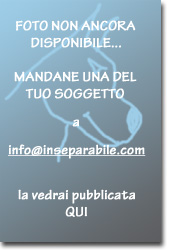HYGEN HOUND (Hygenhund)

We are collecting the material for being able to realize the card of the Hyghenuhund
FCI-Standard N° 266 / 09. 08. 1999 / GB
TRANSLATION : Norsk Kennel Klub.
ORIGIN : Norway.
SUGGESTED BREEDINGS by MENANDPETS.COM:
No breeding to signal
if you want to know like signaling yours, contacts: marketing@inseparabile.it
DATE OF PUBLICATION OF THE ORIGINAL VALID STANDARD : 09.08.1999.
UTILIZATION : Scenthound.
CLASSIFICATION F.C.I. : Group 6 Scenthounds and related breeds.
Section 1.2 Medium-sized Hounds.
With working trial.
GENERAL APPEARANCE : Medium-sized, solid and compact, rectangular with strong topline.
HEAD : Medium-sized and moderately broad, but not heavy. Medium long, somewhat wedge-shaped, but not pointed.
CRANIAL REGION :
Skull : Slightly domed seen both from the front and the side. The occipital bone is scarcely perceptible.
Stop : Distinct.
FACIAL REGION :
Nose : Black.
Muzzle : Clean, broad and deep, rather short than long. Straight bridge of nose. Seen from the side the front of the muzzle should be rounded, not square.
Lips : Clean, not pendulous, falling evenly away to the corner of the mouth.
Jaws/Teeth : Scissor bite.
Cheek : Clean and flat.
Eyes : Dark brown. Medium size, not protruding. Calm and earnest expression. Not showing haw.
Leathers : Medium high set, neither broad nor long, tapering, rounded at the tip. Thin and soft, hanging not close to the cheeks, but somewhat away from them. Reaching hardly half way to the nose when pulled forward.
NECK : Medium length, strong, not too throaty.
BODY :
Back : Straight and strong.
Loin : Broad and muscular.
Croup : Long, broad and slightly rounded.
Chest : Medium broad, long, deep and spacious throughout. The back ribs should be particularly well developed, making the ribcage appear long. The depth of the chest is about half the height at withers.
Belly : Very slightly tucked up.
TAIL : Set on level with the topline. Thick at the root, tapering towards the end. Carried straight or in a slight upward curve; reaching to the hock.
LIMBS
FOREQUARTERS :
General appearance : Clean, solid and sinewy, but not heavy.
Shoulders : Sloping shoulder blades, well angulated shoulder joint.
Elbow : Well angulated.
Pastern : Broad, rather short than long, sligthly sloping.
Forefeet : High, arched and well-knit, pointing straight forward. Firm, and strong pads; well covered with hair between toes and pads.
HINDQUARTERS :
Upper thigh : Muscular and broad.
Stifles : Well angulated.
Lower thigh: Long.
Hock joint : Well angulated. Broad and clean.
Hocks : Short, broad and slightly sloping.
Hindfeet : High, arched and well-knit feet pointing straight forward. Firm and strong pads well covered with hair between toes and pads. Dewclaws permitted, but double dewclaws undesirable.
GAIT/MOVEMENT : Free movement, covering ground. Parallel in front and rear. Not cow-hocked GO BACK TO LIST nor toeing out in the front when moving.
COAT
HAIR : Straight and preferably somewhat rough to the touch, dense, shiny and not too short. The back of the thighs and the tail may be somewhat more heavily coated, but not too much.
COLOUR :
- Red-brown or yellow-red, often with black shading on head, back and tail set, with or without white markings.
- Black and tan, usually combined with white markings.
- White with red-brown or yellow-red patches and ticks, or with black and tan markings.
The different colours should be clearly defined from each other.
SIZE :
Height at withers : Males : 50-58 cm. Ideal 54 cm.
Females : 47-55 cm. Ideal 51 cm.
FAULTS : Any departure from the foregoing points should be considered a fault and the seriousness with which the fault should be regarded should be in exact proportion to its degree.
ELIMINATING FAULT :
- Aggressiveness.
Any dog clearly showing physical or behavioural abnormalities shall be disqualified.
N.B. : Male animals should have two apparently normal testicles fully descended into the scrotum.